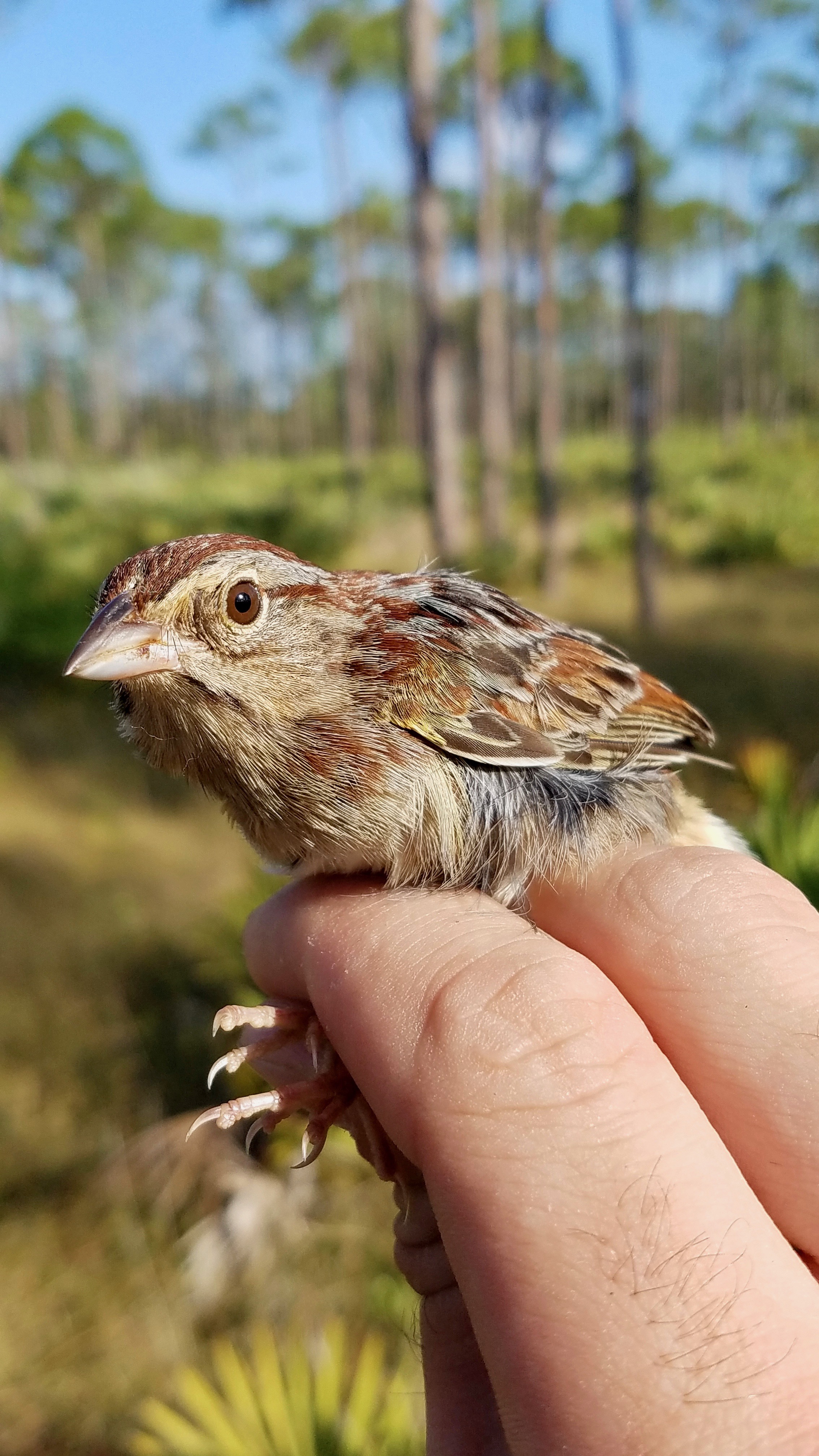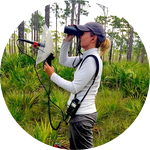About This Project
Bachman's sparrow is a beautiful songster once common to the American southeast. Males vary in how aggressively they defend their territory. Do mad dads produce more, healthier offspring, or is aggression costly? We will measure territory quality, aggressiveness, and hormones of territorial males and link these factors to the success of offspring. We aim to conserve Bachman's sparrow and better understand reproductive success in songbirds.
Ask the Scientists
Join The DiscussionWhat is the context of this research?
Why do individuals competing for resources vary so much in how hard they fight for them? If being very aggressive wins fights, then we should expect all males to fight hard when their resource is contested. Counter to this prediction, we see great variability in the vigor with which individual males respond when challenged (Mougeot et al 2003). One explanation for this variation is that individual males face tradeoffs between the benefits of securing the best territory, and the costs associated with heightened aggression (Class and Moore 2010). These costs may be physiological costs of increased hormone levels, energetic costs, or reduction in parental effort (Ketterson et al. 1992). Males vary in their ability to bear these costs, thus aggressiveness varies among males.
What is the significance of this project?
We are addressing a key question in behavioral ecology: what selective mechanisms maintain variation in behavior? We aim to establish Bachman’s sparrow as a model system to address this question, while also gaining information critical to the species' conservation. Bachman’s sparrow is listed as a conservation priority by conservation organizations and agencies throughout its range. Previous research has focused on natural history and demographics, leaving critical gaps in knowledge about social dynamics such as territorial behavior. These gaps in knowledge impede conservation efforts because understanding and predicting population dynamics cannot proceed without understanding the social factors that can underlie variation in reproductive success.
What are the goals of the project?
We will mark 40 adult male sparrows for individual identification, sample blood for DNA and hormone analysis, and measure male quality (mass, tarsus, wing cord, and body condition score). We will measure each male’s territory size and quality using published methods for this species. For each male we will locate and monitor nests, count and weigh nestlings, take blood samples for paternity analysis, and determine the number of young fledged from each nest. We will quantify each subject’s aggressiveness in response to a simulated rival utilizing song playbacks and a Bachman’s sparrow replica placed within the male’s territory. We will analyze these data to determine how aggressiveness relates to habitat quality and reproductive success.
Budget
This work is part of a larger project addressing the behavioral ecology and conservation of Bachman's sparrow in south Florida. The single most important factor that will promote our project's success is having trained field assistants who work long hours to capture males for DNA and hormone sampling, find and monitor nests, quantify aggressiveness, and measure habitat parameters. $2400 will allow us to add three full time field assistants to our team, which will ensure that we can collect the data we need within the next two months. We also need to gas and maintain our 20 year old field vehicle, and buy hormone assay kits. We have received $16,750 as a Seed Grant from Florida Atlantic University, and these funds are being used to support a doctoral student, purchase supplies and equipment, and pay for laboratory work to quantify rates of extra-pair young in nests.
Endorsed by
 Project Timeline
Project Timeline
April - May 2018: locate territorial males, capture, band, measure condition, blood samples.
May - July 2018: locate and monitor nests, weigh and sample nestlings, determine numbers of young fledged by each male, collect aggression data, measure habitat characteristics.
July - August 2018: run hormone assays, analyze DNA for paternity of young to estimate extra-pair young rates.
May 18, 2018
Project Launched
Jun 15, 2018
Complete aggression trials
Jun 30, 2018
Complete measurements of habitat quality
Jul 15, 2018
Complete measurements of nestlings and quantify reproductive success for each male
Aug 31, 2018
Complete hormone analysis
Meet the Team
Rindy Anderson
Our lab is studying the behavioral ecology of Bachman's sparrow as a model for understanding the links between ecology, physiology, and social behavior in a wild songbird. Bachman's sparrow is a beautiful songster once common throughout the American southeast, but now declining due to loss of its habitat, longleaf pine forests. Students on our lab are studying social behavior, vocal communication, juvenile behavioral development, and animal "personalities." We aim to understand why these sparrows do what they do, and how we can use that information to conserve Bachman's sparrow, and other songbirds.
Additional Information
Visit our lab website to learn more about what we do!

Project Backers
- 10Backers
- 32%Funded
- $981Total Donations
- $98.10Average Donation

